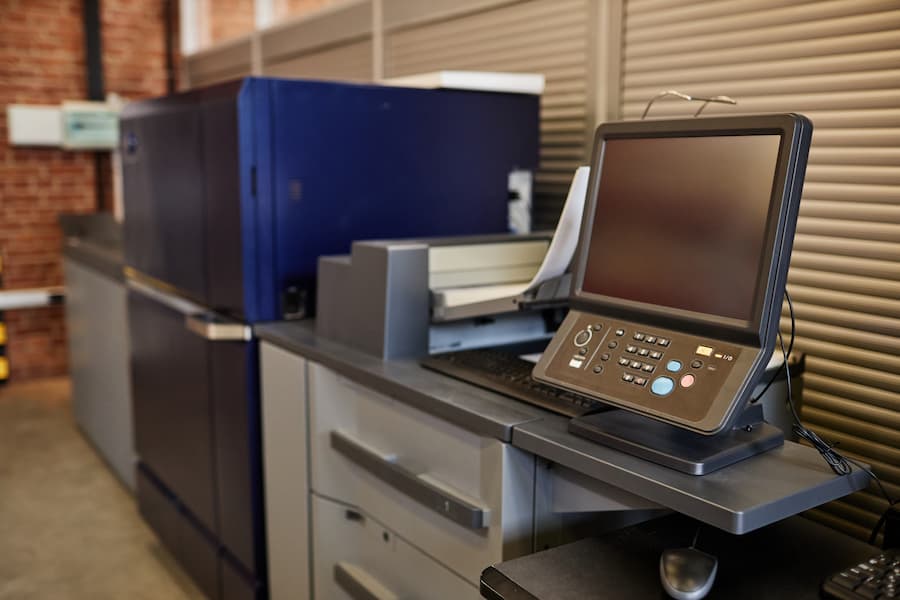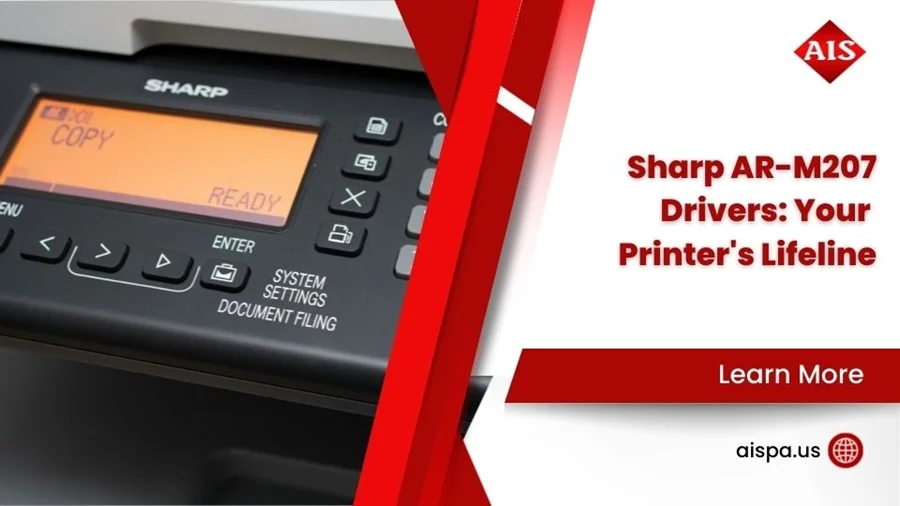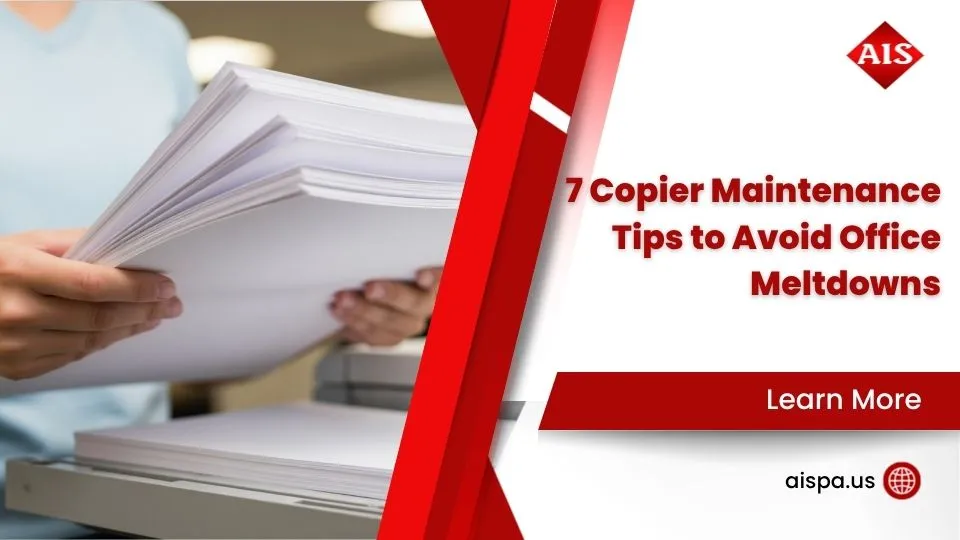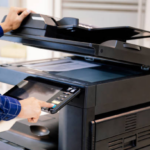Production Printers vs Office Printers: Similarities and Differences
Production Printers vs Office Printers
Choosing the right printer may be difficult according to technical specifications and functionalities. But fear not! This guide will explain the key distinctions between production printers and office printers, empowering you to make an informed decision.
Production printers, also known as digital presses, are industrial workhorses designed for high-volume printing. They excel in churning out massive quantities of professional-grade materials, making them the go-to choice for commercial printing companies and in-house print departments handling a heavy workload.
On the other hand, office printers are everyday use equipment built for the demands of a typical office environment. They handle routine printing tasks like reports, presentations, and emails with ease, offering a balance between functionality and affordability.
Understanding these fundamental differences is crucial for selecting the most suitable printer for your specific needs. Let’s explore deeper into the factors you should consider before buying.
Understanding Your Printing Needs
Before understanding on your printer quest, it’s vital to gain a clear understanding of your printing requirements. Here are some key factors to consider:
-
Print volume: This refers to the quantity of pages you typically print each month. Low-volume printing (less than 500 pages) is well-suited for a basic office printer. Conversely, if you consistently require thousands of pages per month, a production printer is a worthy investment.
-
Print quality requirements: Do your projects demand high-quality output for photos and intricate graphics? Production printers boast superior resolution and color accuracy, ideal for creating professional marketing materials and brochures.
-
Media types: Consider the variety of materials you plan to print on. Production printers can handle a broader spectrum of media, from heavyweight cardstock to envelopes, while office printers might be limited to standard paper.
-
Finishing needs: Do your projects necessitate additional touches like stapling, folding, or binding? Production printers often offer integrated finishing options, streamlining your workflow.
Identifying Your Printing Needs
Once you’ve grasped these factors, analyze your typical print jobs. Are reports and presentations the mainstay of your printing needs? Or do you require high-volume, high-quality output for marketing materials? Estimate your average monthly print volume and consider any potential growth in the future. This will help you determine the printer’s capacity that best aligns with your workflow.
Cost Considerations
The initial cost of a production printer is certainly higher compared to an office printer. However, production printers boast a lower cost per page for high-volume printing, making them more economical in the long run. Don’t forget to factor in maintenance costs when calculating the Total Cost of Ownership (TCO).
Comparison of Production Printers Office Printers
Now that we’ve explored how to identify your printing needs, let’s delve deeper into the key differences between production printers and office printers. Understanding these distinctions will empower you to make an informed decision when selecting the perfect fit for your workflow.

Volume and Speed
The most striking disparity between production and office printers lies in their printing volume and speed.
-
Production Printer Advantages: Production printers are the undisputed champions of high-volume printing. These workhorses boast the capability of churning out thousands of pages per minute, making them ideal for tackling large print jobs with exceptional efficiency. Imagine effortlessly printing marketing materials, brochures, and reports in bulk – that’s the power a production printer brings to the table. For high-volume printing needs, look no further than print shops, commercial printers, or in-house print departments that leverage production printers to keep their operations running smoothly.
-
Office Printer Advantages: Office printers, on the other hand, excel in handling the everyday printing tasks that form the backbone of a typical office environment. They are perfectly suited for moderate to low-volume printing needs, such as reports, presentations, and emails. Their affordability makes them an attractive option for businesses with lower printing demands.
Features and Functionality
Production printers and office printers diverge significantly in terms of features and functionalities.
-
Production Printer Advantages: Production printers are packed with advanced features that cater to professional printing requirements. They offer superior color control, allowing for precise color matching and vibrant output – ideal for creating high-quality marketing materials that captivate your audience. In addition, production printers often boast a wider range of finishing options, such as stapling, folding, and binding, streamlining your workflow by eliminating the need for separate post-processing steps. For complex printing tasks, production printers often come equipped with a Raster Image Processor (RIP), a powerful tool that optimizes complex graphics and ensures exceptional print quality.
-
Office Printer Advantages: Office printers prioritize user-friendliness and affordability. Their interfaces are designed to be intuitive, making them easy to use for everyone in the office, regardless of technical expertise. Their compact size allows them to fit comfortably into even the most space-constrained office environments. Some office printers even offer basic scanning and copying functionalities, providing a versatile solution for everyday office needs.
Cost and Maintenance
The upfront cost of a production printer is undeniably higher compared to an office printer. However, the story doesn’t end there.
-
Production Printer Considerations: While the initial investment might seem daunting, production printers boast a significantly lower cost per page for high-volume printing. This translates to significant savings in the long run, especially for businesses that consistently require large print runs. It’s important to factor in maintenance costs as well. Production printers often necessitate specialized technicians for servicing and repairs.
-
Office Printer Considerations: Office printers offer a more budget-friendly upfront cost. However, the cost per page tends to be higher, particularly for color printing. Maintenance for office printers is generally easier and less expensive compared to production printers.

Durability and Reliability
The built quality and lifespan of production and office printers also differ.
-
Production Printer Advantages: Production printers are engineered for continuous operation and high-volume printing demands. Their robust construction allows them to handle heavy workloads with ease, ensuring a longer lifespan compared to office printers.
-
Office Printer Considerations: Office printers are suitable for moderate printing needs. They may require more frequent repairs and replacements due to their lighter build and higher potential for wear and tear. The lifespan of an office printer is generally shorter compared to a production printer.
The choice between a production printer and an office printer hinges on your specific printing needs and budget.
Choosing the Right Printer for Your Needs
Now that you’ve explored the key differences between production printers and office printers, it’s time to translate this knowledge into action! Here’s a roadmap to guide you in selecting the perfect printer for your business:
- Production Printers: Ideal for high-volume printing, professional quality output, advanced features like color control and finishing options. Best suited for commercial printers, print shops, or in-house print departments with heavy workloads.
- Office Printers: Perfect for everyday office tasks, moderate printing volumes, user-friendly interface, and compact size. Ideal for businesses with lower printing needs and budget constraints.
Decision-Making Flowchart
-
Estimate your average monthly print volume:
- Low volume (less than 500 pages): Office printer is a suitable choice.
- Medium volume (500-5,000 pages): Consider both office and production printers, depending on budget and future growth projections.
- High volume (more than 5,000 pages): Production printer is likely the most cost-effective solution.
-
Evaluate your print quality requirements:
- Do you need high-resolution photos and intricate graphics? A production printer will deliver superior results.
- Are basic text documents and presentations your primary focus? An office printer might suffice.
-
Consider your budget:
- While production printers offer lower costs per page in the long run, their upfront cost is higher.
- Office printers are more budget-friendly upfront but may have a higher cost per page, especially for color printing.
Managed Print Services: An Alternative Solution
For businesses with fluctuating printing needs or limited IT resources, managed print services (MPS) can be a compelling alternative. MPS providers handle the entire printing infrastructure, including printer selection, installation, maintenance, and toner supplies. This can streamline your operations, reduce printing costs, and free up your IT staff to focus on core business functions.

Remember, the optimal printer choice hinges on your unique printing requirements and budget. By carefully considering the factors outlined above, you’ll be well-equipped to make an informed decision that empowers your business to flourish.
What People Also Ask
Can a production printer be used as an office printer?
Yes, technically a production printer can handle basic office printing tasks. However, it’s often overkill for low-volume printing and might not be the most cost-effective solution due to the higher upfront cost and maintenance requirements.
What are the benefits of leasing a production printer?
Leasing a production printer can offer easier budgeting with predictable monthly payments. It also ensures access to professional maintenance and service from the leasing company, keeping your printer running smoothly.
How can I reduce printing costs in my office?
There are several ways to reduce printing costs: implement a print policy to discourage unnecessary printing, encourage double-sided printing to save paper, and track print usage to identify areas for optimization.
Where can I find a qualified technician for my production printer?
Contact the manufacturer of your production printer or a certified service provider in your area. They will have trained technicians with the expertise to maintain and repair your specific printer model.
What are some eco-friendly printing practices?
Use recycled paper whenever possible, print only what’s necessary, and consider digital alternatives for document sharing and communication to minimize paper usage.
Conclusion
Equipping your business with the right printer can significantly enhance your workflow and productivity. By understanding the distinct advantages and limitations of production printers and office printers, you’re empowered to make an informed decision.
Remember, the ideal choice hinges on your specific printing volume, quality requirements, budget, and future growth projections. So, weigh the factors outlined in this guide, and get ready to unlock the printing solution that propels your business forward!
For more information and services you can contact us for a free quote and estimation.
- Address: 165 Veterans Way, Warminster, PA 18974
- Email: sales@aispa.us
- Call Us: (215) 999-8445











